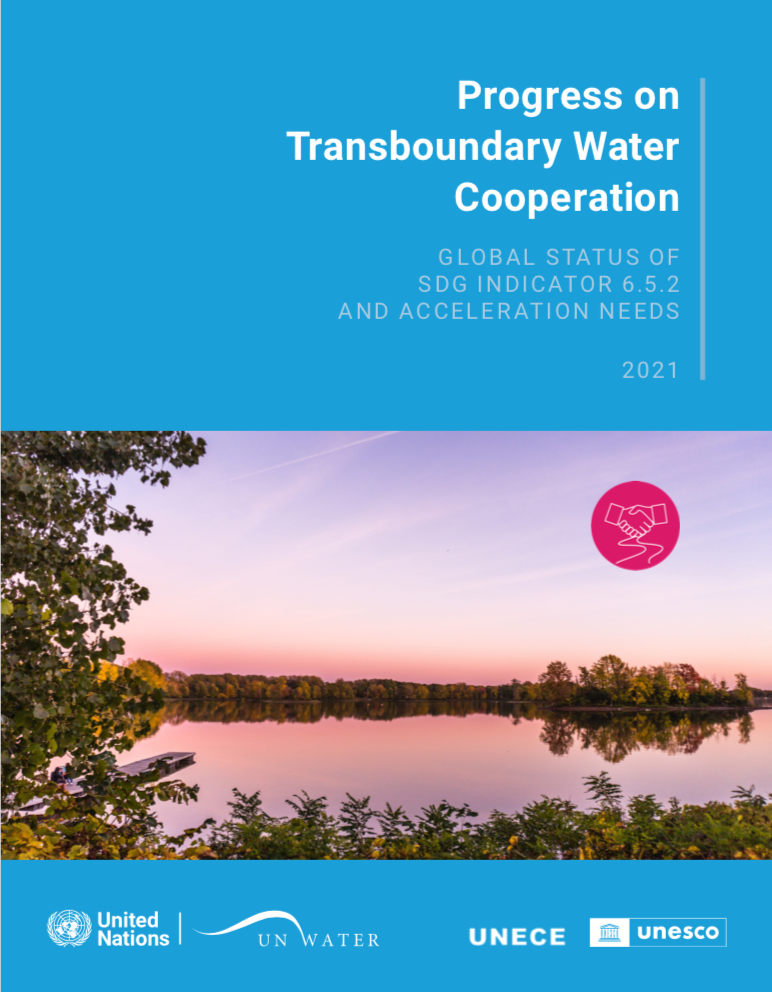Progress on Transboundary Water Cooperation – 2021 Update


Target 6.5 is: “By 2030, implement integrated water resources management at all levels, including through transboundary cooperation as appropriate.”
Indicator 6.5.2 looks at the area of a country within transboundary basins and assesses the extent to which that area is covered by operational cooperation arrangements. Transboundary basins are river, lake and aquifer systems shared between two or more countries. Arrangements are “operational” when there is a joint body, meetings between countries take place and information is exchanged at least once per year, and joint or coordinated management plans or objectives for the basin(s) have been set.
Transboundary waters account for 60 per cent of the world’s freshwater flows and 153 countries have territory within at least one of the 286 transboundary river and lake basins and 592 transboundary aquifer systems.
This report presents the global status on transboundary cooperation and acceleration needs to achieve target 6.5 by 2030, based on the latest data on indicator 6.5.2.
By combining data from 2017 and 2020, it is possible to calculate the indicator for 101 of the 153 countries that share transboundary rivers, lakes and aquifers. These data show that the global average of the indicator value (percentage of transboundary basin area in a country covered by an operational arrangement) is 58 per cent. Thirty-two countries now report having 90 per cent or more of their transboundary basin area covered by operational arrangements (compared with 22 in 2017).
- Download UNECE Progress on Transboundary Water Cooperation – 2021 Update.
- Download UNESCO Progress on Transboundary Water Cooperation – 2021 Update.
- Access a text version of the publication
- Download an infographic on how to accelerate progress on transboundary cooperation.
- Explore the latest data on indicator 6.5.2, by country, region and for the whole world.
UN-Water Publications
UN-Water’s publications can be divided into two main groups: the publications that represent all Members and Partners of UN-Water – the collective products – and the publications that are under the UN-Water umbrella but produced by groups or individual UN-Water Members and/or Partners – the related products.
